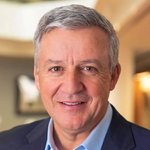
Coca-Cola Co
NYSE:KO


| US |

|
Johnson & Johnson
NYSE:JNJ
|
Pharmaceuticals
|
| US |

|
Berkshire Hathaway Inc
NYSE:BRK.A
|
Financial Services
|
| US |

|
Bank of America Corp
NYSE:BAC
|
Banking
|
| US |

|
Mastercard Inc
NYSE:MA
|
Technology
|
| US |

|
UnitedHealth Group Inc
NYSE:UNH
|
Health Care
|
| US |

|
Exxon Mobil Corp
NYSE:XOM
|
Energy
|
| US |

|
Pfizer Inc
NYSE:PFE
|
Pharmaceuticals
|
| US |

|
Palantir Technologies Inc
NYSE:PLTR
|
Technology
|
| US |

|
Nike Inc
NYSE:NKE
|
Textiles, Apparel & Luxury Goods
|
| US |

|
Visa Inc
NYSE:V
|
Technology
|
| CN |

|
Alibaba Group Holding Ltd
NYSE:BABA
|
Retail
|
| US |

|
3M Co
NYSE:MMM
|
Industrial Conglomerates
|
| US |

|
JPMorgan Chase & Co
NYSE:JPM
|
Banking
|
| US |

|
Coca-Cola Co
NYSE:KO
|
Beverages
|
| US |

|
Walmart Inc
NYSE:WMT
|
Retail
|
| US |

|
Verizon Communications Inc
NYSE:VZ
|
Telecommunication
|
Utilize notes to systematically review your investment decisions. By reflecting on past outcomes, you can discern effective strategies and identify those that underperformed. This continuous feedback loop enables you to adapt and refine your approach, optimizing for future success.
Each note serves as a learning point, offering insights into your decision-making processes. Over time, you'll accumulate a personalized database of knowledge, enhancing your ability to make informed decisions quickly and effectively.
With a comprehensive record of your investment history at your fingertips, you can compare current opportunities against past experiences. This not only bolsters your confidence but also ensures that each decision is grounded in a well-documented rationale.
Do you really want to delete this note?
This action cannot be undone.

| 52 Week Range |
57.2207
72.5129
|
| Price Target |
|
We'll email you a reminder when the closing price reaches USD.
Choose the stock you wish to monitor with a price alert.

|
Johnson & Johnson
NYSE:JNJ
|
US |

|
Berkshire Hathaway Inc
NYSE:BRK.A
|
US |

|
Bank of America Corp
NYSE:BAC
|
US |

|
Mastercard Inc
NYSE:MA
|
US |

|
UnitedHealth Group Inc
NYSE:UNH
|
US |

|
Exxon Mobil Corp
NYSE:XOM
|
US |

|
Pfizer Inc
NYSE:PFE
|
US |

|
Palantir Technologies Inc
NYSE:PLTR
|
US |

|
Nike Inc
NYSE:NKE
|
US |

|
Visa Inc
NYSE:V
|
US |

|
Alibaba Group Holding Ltd
NYSE:BABA
|
CN |

|
3M Co
NYSE:MMM
|
US |

|
JPMorgan Chase & Co
NYSE:JPM
|
US |

|
Coca-Cola Co
NYSE:KO
|
US |

|
Walmart Inc
NYSE:WMT
|
US |

|
Verizon Communications Inc
NYSE:VZ
|
US |
This alert will be permanently deleted.
 Coca-Cola Co
Coca-Cola Co
Coca-Cola Co
Coca-Cola Co., a titan in the global beverage industry, is more than just an emblematic red logo; it is a masterful blend of branding, strategic partnerships, and an extensive distribution network. Originating in 1886, this Atlanta-born company has long surpassed its roots of selling one iconic soda. Today, Coca-Cola's business model is as multifaceted as the flavors it offers. At its core, the company earns revenue primarily through the manufacture and sale of concentrate and syrup. This is then delivered to bottling partners who, spread across nearly every corner of the globe, take charge of the bottling, distribution, and direct customer sales. This franchise model not only efficiently diversifies distribution risks but allows Coca-Cola to leverage local expertise and infrastructure, making it a cornerstone of its enduring global success.
The brilliance of Coca-Cola's operational strategy lies in its remarkable marketing prowess and brand loyalty cultivation. Through strategic acquisitions and the launch of new products, it continuously adapts to shifting consumer preferences, expanding its portfolio to include innovative offerings like energy drinks, teas, and more recently, health-conscious options. The brand's extensive global presence allows it to capitalize on economies of scale, driving down operational costs while keeping brand value high and distribution widespread. Its precision in aligning its brand with cultural moments and local flavors ensures that Coca-Cola remains a ubiquitous choice in diverse markets worldwide. With substantial investment in digital and data analytics, Coca-Cola harnesses consumer insights to refine its marketing strategies and product development, ensuring its relevance and profitability in an ever-evolving beverage landscape.

Coca-Cola Co., a titan in the global beverage industry, is more than just an emblematic red logo; it is a masterful blend of branding, strategic partnerships, and an extensive distribution network. Originating in 1886, this Atlanta-born company has long surpassed its roots of selling one iconic soda. Today, Coca-Cola's business model is as multifaceted as the flavors it offers. At its core, the company earns revenue primarily through the manufacture and sale of concentrate and syrup. This is then delivered to bottling partners who, spread across nearly every corner of the globe, take charge of the bottling, distribution, and direct customer sales. This franchise model not only efficiently diversifies distribution risks but allows Coca-Cola to leverage local expertise and infrastructure, making it a cornerstone of its enduring global success.
The brilliance of Coca-Cola's operational strategy lies in its remarkable marketing prowess and brand loyalty cultivation. Through strategic acquisitions and the launch of new products, it continuously adapts to shifting consumer preferences, expanding its portfolio to include innovative offerings like energy drinks, teas, and more recently, health-conscious options. The brand's extensive global presence allows it to capitalize on economies of scale, driving down operational costs while keeping brand value high and distribution widespread. Its precision in aligning its brand with cultural moments and local flavors ensures that Coca-Cola remains a ubiquitous choice in diverse markets worldwide. With substantial investment in digital and data analytics, Coca-Cola harnesses consumer insights to refine its marketing strategies and product development, ensuring its relevance and profitability in an ever-evolving beverage landscape.
Earnings Calls
Management

James Robert B. Quincey is a prominent business executive known for his role as the Chairman and Chief Executive Officer (CEO) of The Coca-Cola Company. Born in London, England in 1965, Quincey grew up in a multinational environment, which has been influential in his global approach to business leadership. Quincey joined Coca-Cola in 1996, in the Latin America Group and steadily rose through the ranks due to his strategic acumen and leadership skills. He was pivotal in the acquisition of the Jugos del Valle brand in 2007 and driving growth in the company's Mexican operations. In 2015, Quincey became the President and Chief Operating Officer (COO) of Coca-Cola, responsible for all of the company's operating units worldwide. Under his stewardship, Coca-Cola streamlined its operations and expanded its product portfolio beyond traditional soft drinks to include a variety of beverages, catering to changing consumer preferences. He succeeded Muhtar Kent as the CEO of Coca-Cola on May 1, 2017, and later became Chairman of the Board in 2019. As CEO, Quincey has been instrumental in accelerating Coca-Cola's growth strategy, emphasizing innovation, sustainability, and a focus on a "total beverage company" approach. He champions efforts in reducing the company's environmental impact and increasing its social responsibility initiatives. Quincey holds a bachelor’s degree in electronic engineering from the University of Liverpool. He is widely recognized for his dynamic leadership and commitment to addressing modern business challenges through adaptive strategies and engaging consumer experiences.

Quincey joined Coca-Cola in 1996, in the Latin America Group and steadily rose through the ranks due to his strategic acumen and leadership skills. He was pivotal in the acquisition of the Jugos del Valle brand in 2007 and driving growth in the company's Mexican operations.
In 2015, Quincey became the President and Chief Operating Officer (COO) of Coca-Cola, responsible for all of the company's operating units worldwide. Under his stewardship, Coca-Cola streamlined its operations and expanded its product portfolio beyond traditional soft drinks to include a variety of beverages, catering to changing consumer preferences.
He succeeded Muhtar Kent as the CEO of Coca-Cola on May 1, 2017, and later became Chairman of the Board in 2019. As CEO, Quincey has been instrumental in accelerating Coca-Cola's growth strategy, emphasizing innovation, sustainability, and a focus on a "total beverage company" approach. He champions efforts in reducing the company's environmental impact and increasing its social responsibility initiatives.
Quincey holds a bachelor’s degree in electronic engineering from the University of Liverpool. He is widely recognized for his dynamic leadership and commitment to addressing modern business challenges through adaptive strategies and engaging consumer experiences.

John Murphy is the Executive Vice President and Chief Financial Officer of The Coca-Cola Company. He joined Coca-Cola in 1988 and has held a variety of roles within the company, demonstrating his extensive experience and leadership within the beverage industry. Before becoming CFO in 2019, Murphy served as the president of the company's Asia Pacific Group. Throughout his career at Coca-Cola, Murphy has played a significant role in strategic planning and financial leadership, contributing to the company's global reach and financial health. His expertise in international operations and finance has been crucial in navigating the company through various economic landscapes. Murphy is known for his deep understanding of the company's operations and his ability to drive performance improvements and deliver results.


Manuel Arroyo Prieto is a seasoned executive at The Coca-Cola Company, where he has played a significant role in global operations. He serves as the Global Chief Marketing Officer (CMO), a position he has held since January 2020. In this capacity, Arroyo is responsible for overseeing the company's global marketing strategies, ensuring that Coca-Cola's iconic brand continues to resonate with consumers worldwide. Before becoming CMO, Arroyo was the President of Coca-Cola's Asia Pacific Group, where he managed operations across a diverse and dynamic region. His leadership was instrumental in driving growth and expanding the company's market presence in Asia Pacific. Arroyo joined Coca-Cola in 1995 and has since held various leadership roles across different geographies and functions, bringing a wealth of experience and a global perspective to the company. His strategic vision and deep understanding of consumer needs have been pivotal in navigating the ever-evolving landscape of the beverage industry. Arroyo is known for his emphasis on innovation and digital transformation in marketing efforts. His educational background includes a degree in law and a business degree from the University of Barcelona and ESADE Business School, respectively. Under his leadership, Coca-Cola continues to engage consumers through various marketing channels and initiatives, while also focusing on sustainability and social responsibility.

Before becoming CMO, Arroyo was the President of Coca-Cola's Asia Pacific Group, where he managed operations across a diverse and dynamic region. His leadership was instrumental in driving growth and expanding the company's market presence in Asia Pacific.
Arroyo joined Coca-Cola in 1995 and has since held various leadership roles across different geographies and functions, bringing a wealth of experience and a global perspective to the company. His strategic vision and deep understanding of consumer needs have been pivotal in navigating the ever-evolving landscape of the beverage industry. Arroyo is known for his emphasis on innovation and digital transformation in marketing efforts.
His educational background includes a degree in law and a business degree from the University of Barcelona and ESADE Business School, respectively. Under his leadership, Coca-Cola continues to engage consumers through various marketing channels and initiatives, while also focusing on sustainability and social responsibility.

Henrique Braun is a notable executive at The Coca-Cola Company. He has held several leadership positions within the organization. One of his prominent roles was serving as the President of Coca-Cola's Latin America operating unit. In this capacity, he was responsible for overseeing the company's operations across a significant and diverse market, which includes numerous countries with varied consumer bases and market conditions. Henrique joined Coca-Cola in 1996 and has an extensive history with the company, demonstrating his expertise in different areas of its operations. Over the years, he has worked in various vital positions, including senior roles in the company's supply chain and operations across different geographical locations. His global experience and deep understanding of the beverage industry have been integral to his leadership approach. Educationally, Henrique Braun holds a degree in agricultural engineering from the University of São Paulo and a Master's in logistics, materials, and supply chain management from the Georgia Institute of Technology, which have equipped him with a strong foundation in managing Coca-Cola's complex supply chain and operations. His leadership has often emphasized innovation, sustainability, and a commitment to the communities Coca-Cola serves, aligning with the company's strategic goals of growth and responsible business practices. His tenure has helped reinforce Coca-Cola's position in the Latin American market by adapting to evolving consumer trends and enhancing operational efficiency. Henrique Braun continues to be a prominent figure within the Coca-Cola Company, contributing his extensive experience and leadership skills to drive the company's success in a competitive industry.

Henrique joined Coca-Cola in 1996 and has an extensive history with the company, demonstrating his expertise in different areas of its operations. Over the years, he has worked in various vital positions, including senior roles in the company's supply chain and operations across different geographical locations. His global experience and deep understanding of the beverage industry have been integral to his leadership approach.
Educationally, Henrique Braun holds a degree in agricultural engineering from the University of São Paulo and a Master's in logistics, materials, and supply chain management from the Georgia Institute of Technology, which have equipped him with a strong foundation in managing Coca-Cola's complex supply chain and operations.
His leadership has often emphasized innovation, sustainability, and a commitment to the communities Coca-Cola serves, aligning with the company's strategic goals of growth and responsible business practices. His tenure has helped reinforce Coca-Cola's position in the Latin American market by adapting to evolving consumer trends and enhancing operational efficiency.
Henrique Braun continues to be a prominent figure within the Coca-Cola Company, contributing his extensive experience and leadership skills to drive the company's success in a competitive industry.

Jennifer Kay Mann is a notable executive at The Coca-Cola Company, where she has held various leadership roles throughout her career. Mann is known for her expertise in strategic planning and her ability to drive operational excellence. She has been instrumental in implementing key initiatives that have led to significant growth and innovation within the company. Before her current position, she has had a successful trajectory within Coca-Cola, taking on roles that focused on maximizing the efficiency of operations and fostering a culture of continuous improvement. Her leadership style emphasizes collaboration, innovation, and strategic foresight, making her a respected figure in the business community. Mann's work has helped Coca-Cola maintain its position as a global leader in the beverage industry while adapting to changing consumer preferences and market dynamics.

Before her current position, she has had a successful trajectory within Coca-Cola, taking on roles that focused on maximizing the efficiency of operations and fostering a culture of continuous improvement. Her leadership style emphasizes collaboration, innovation, and strategic foresight, making her a respected figure in the business community. Mann's work has helped Coca-Cola maintain its position as a global leader in the beverage industry while adapting to changing consumer preferences and market dynamics.
Erin May is currently not recognized as an executive officer at the Coca-Cola Company. Please ensure you have the correct details, as it might be possible she holds a different role or you may be referring to someone else within the organization. If you have any more information or need further assistance, feel free to ask!
Stacy Lynn Apter is a prominent executive in the financial sector, currently recognized for her role as the Chief Financial Officer (CFO) at The Coca-Cola Company. She has built a significant career within the company, serving in various capacities that have honed her expertise in financial management and strategic planning. Prior to becoming CFO, Apter played a vital role in the company's financial operations, having worked in different positions that contributed to global finance, investor relations, and corporate strategy. Her leadership is marked by a strong focus on financial efficiency, transparency, and aligning financial goals with the company's broader strategic objectives. Apter's work is pivotal in managing Coca-Cola's financial policies, overseeing budgets, investments, and ensuring the company's profitability aligns with its growth endeavors. Her experience and leadership continue to contribute to Coca-Cola's position as a leader in the global beverage industry.
Her leadership is marked by a strong focus on financial efficiency, transparency, and aligning financial goals with the company's broader strategic objectives. Apter's work is pivotal in managing Coca-Cola's financial policies, overseeing budgets, investments, and ensuring the company's profitability aligns with its growth endeavors. Her experience and leadership continue to contribute to Coca-Cola's position as a leader in the global beverage industry.

Nancy W. Quan is a distinguished executive at The Coca-Cola Company, where she has held significant roles that reflect her expertise and contributions to the company’s innovation and product development. She is known for her leadership as the Chief Technical and Innovation Officer, a position that underscores her pivotal role in driving the company's technical capabilities and fostering a culture of innovation. Quan initially joined Coca-Cola in 2007, and over the years, she has been instrumental in enhancing the firm’s global innovation strategies, focusing on developing new products and improving existing offerings to meet consumer demands and preferences. Her role typically involves overseeing the technical operations, which include research and development, quality assurance, and regulatory functions, ensuring that Coca-Cola’s products adhere to the highest standards of quality and sustainability. Before her tenure at Coca-Cola, Nancy Quan held significant positions in other global food and beverage companies, contributing to a rich career that spans multiple facets of product innovation and development. Her educational background includes degrees in engineering, underscoring her technical acumen and strategic vision in the field. Quan is recognized not only for her technical skills but also for her commitment to driving sustainable practices within the company, aligning with global sustainability goals. Her leadership style is often described as collaborative and forward-thinking, focusing on leveraging technology and consumer insights to fuel long-term growth for Coca-Cola.

Quan initially joined Coca-Cola in 2007, and over the years, she has been instrumental in enhancing the firm’s global innovation strategies, focusing on developing new products and improving existing offerings to meet consumer demands and preferences. Her role typically involves overseeing the technical operations, which include research and development, quality assurance, and regulatory functions, ensuring that Coca-Cola’s products adhere to the highest standards of quality and sustainability.
Before her tenure at Coca-Cola, Nancy Quan held significant positions in other global food and beverage companies, contributing to a rich career that spans multiple facets of product innovation and development. Her educational background includes degrees in engineering, underscoring her technical acumen and strategic vision in the field.
Quan is recognized not only for her technical skills but also for her commitment to driving sustainable practices within the company, aligning with global sustainability goals. Her leadership style is often described as collaborative and forward-thinking, focusing on leveraging technology and consumer insights to fuel long-term growth for Coca-Cola.
Neeraj Tolmare is a notable executive at The Coca-Cola Company, where he holds the position of Chief Information Officer (CIO). In his role, Tolmare is responsible for overseeing the company's information technology strategy and digital transformation efforts. He leads global initiatives aimed at enhancing Coca-Cola's technological capabilities, advocating for innovation, and driving efficiency through digital solutions. Before joining Coca-Cola, Tolmare had an extensive career in technology and leadership roles across various industries. His experience encompasses strategic planning, digital transformation, and managing large-scale IT operations. Tolmare is recognized for his ability to align technological initiatives with business objectives, ensuring that digital advancements support the company's growth and efficiency targets. His leadership style is characterized by a focus on collaboration and fostering a culture of innovation, encouraging teams to leverage technology to enhance business value. Through his strategic vision, Tolmare contributes significantly to Coca-Cola's efforts to stay at the forefront of digital innovation in the beverage industry.
Before joining Coca-Cola, Tolmare had an extensive career in technology and leadership roles across various industries. His experience encompasses strategic planning, digital transformation, and managing large-scale IT operations. Tolmare is recognized for his ability to align technological initiatives with business objectives, ensuring that digital advancements support the company's growth and efficiency targets.
His leadership style is characterized by a focus on collaboration and fostering a culture of innovation, encouraging teams to leverage technology to enhance business value. Through his strategic vision, Tolmare contributes significantly to Coca-Cola's efforts to stay at the forefront of digital innovation in the beverage industry.






























 You don't have any saved screeners yet
You don't have any saved screeners yet
